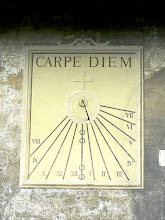SOLAR SENTINELS

SOLAR SENTINELS
________________ September 2, 2006
"We have one solar maximum left to learn what we need to know before we send humans back to the Moon."
–-Prof. Robert Lin, Chairman of the Solar Sentinels Working Group, SPD, said in June 2006 .
It is to remember that, in his 1970s book, "Space", James Michener depicted a fictional Apollo mission that lost its crew to radiation from a massive solar flare.
He based his tale on what easily might have been but for lucky timing: a massive flare on Aug. 7, 1972 occurred between Apollo 16 (April) and Apollo 17 (December), mankind's last journeys to the Moon.
The event still resonates today. NASA is preparing to send astronauts back to the Moon and on even longer journeys to Mars. With crews "out there" for extended periods, "the chances go way up that they'll be caught in the middle of a storm," says David Hathaway, a solar physicist at NASA's Marshall Space Flight Center.
"The educated view about the August 1972 flare is that a crew on the surface of the Moon would have gotten really sick." Or worse.
Dr. Lawrence Townsend of the University of Tennessee and his colleagues calculated that energetic particles from a super flare, like that recorded by Sir Richard Carrington in September 1859, could kill.
Not only humans are at risk. Miniaturized modern electronics are more susceptible to radiation damage than their predecessors were 40 years ago.
A recent example: Japan's Nozomi Mars probe was crippled by an intense solar energetic particle event in April 2002.
Future NASA probes are going to be vulnerable, too.
"NASA needs reliable forecasts of space weather," says Hathaway. The problem is, scientists are still learning to make these forecasts. "
"It's often said that space weather forecasting is 50 years behind Earth-weather forecasting. We need to catch up."
A good "catch-up" opportunity is just around the corner.
Solar Cycle 24 is beginning and it is expected to reach maximum between 2010 and 2012. During that time, there will be an abundance of solar flares and coronal mass ejections (CMEs) for astronomers to study.
"NASA astronauts are scheduled to return to the Moon around 2020," notes Robert Lin, a solar physicist at UC Berkeley. "We've got only one solar maximum left to learn what we need to know" to protect those crews.
Lin recently chaired a team commissioned by NASA in 2004 to study a "Solar Sentinels" mission that would help scientists learn to predict solar storms in time to warn astronauts. Their report has just been published.
The photo above is: The cover of the just-released Solar Sentinels report.
They note that several new spacecraft are already planned for studying the Sun during Cycle 24, including the Solar Terrestrial Relations Observatory (STEREO), Solar-B, and the Solar Dynamics Observatory.
These missions will take 3D pictures of solar explosions, map the unstable magnetic fields of sunspots (the source of flares), and probe the sun's inner magnetic dynamo.
But that may not be enough. Additional eyes and sensors are needed, the Sentinels team argues, to help address two key questions:
(1) How are solar energetic particles accelerated from the Sun?
(2) How are CMEs born?
In particular, they recommend the following:
Inner Heliospheric Sentinels --four identical probes stationed inside the orbits of Venus and Mercury--.
These spacecraft would sample freshly accelerated solar energetic particles close to the Sun.
The four Inner Heliospheric Sentinels will face unique thermal and power challenges as they orbit the Sun, some well inside Mercury's orbit.
Near-Earth Sentinel —a single probe orbiting Earth. This Sentinel would carry a coronagraph, a special telescope for observing the Sun's faint corona where CMEs get their start.
Farside Sentinel —a single probe to watch the farside of the sun. Together with other spacecraft, this sentinel would provide a complete picture of the sun --not just the half we see from Earth.
"The Sentinels would be based on existing technology so they could be built and launched in time for the next solar maximum," says Lin. The Sentinels themselves aren't intended as a day-in/day-out operational warning system. "But what we learn from it will naturally form the basis for a true operational network."
NASA's Science Mission Directorate is considering the Sentinels recommendations.
Meanwhile, Solar Cycle 24 is beginning.


0 Comments:
Post a Comment
<< Home